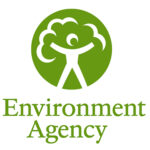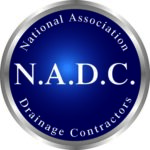We’re proud to serve customers throughout Cumbria and beyond, including:
Cesspit Emptying in Cumbria
A cesspit (or cesspool) is a sealed tank that collects sewage without discharging it into the ground. Because there is no outlet, it must be emptied regularly to avoid overflow, contamination, and system failure. At Unblock Cumbria, we provide professional cesspit emptying services across Cumbria and the Scottish Borders, ensuring safe, compliant removal of waste and dependable service for homes, rural properties, and off-grid sites.
Whether your cesspit is built for domestic use or small commercial operation, we have the tanker fleet, licensing, and experience to do the job efficiently, responsibly, and with minimal disruption.
How It Works
-
Access inspection & risk assessment
We check tank access, ground conditions, and route for tanker approach to ensure safe operation. -
Safe transfer & vacuuming
Using our sealed vacuum tankers, we pump out all liquid and solid waste, carefully extracting sludge and solids from the tank. -
Transport & licensed disposal
All waste is transported and disposed of at fully permitted effluent treatment facilities or licensed disposal sites in accordance with environmental regulations. -
Tank flushing & internal cleaning (optional)
If requested, we can flush the interior of the tank to remove residual sediment before returning it to service. -
Documentation & duty-of-care paperwork
We provide you with paperwork, waste transfer notes, and proof of disposal for your records and compliance.
Why It’s Crucial
A cesspit must never be allowed to overflow, leak, or reach full capacity, because:
-
Health & environmental risk — Overflowing sewage can contaminate groundwater, soil, and nearby buildings
-
System failure — An overfilled cesspit may force waste back into plumbing or cause blockages
-
Legal liability — The operator is responsible for ensuring safe, legal handling of waste
-
Routine regulation vs emergency cost — Preventative emptying is far cheaper and safer than reactive rescue operations
Cesspits are not subject to the “general binding rules” for small sewage discharges (because they do not discharge to ground or surface water). However, you must empty before overflow and ensure that waste is handled by a licensed waste carrier.
If you ever replace a cesspit with a treatment system in the future, you’ll need to comply with discharge rules and environmental permitting.
Why Choose Us?
-
Licensed waste carrier — We comply with all environmental regulations and provide full duty-of-care documentation
-
Modern tanker fleet — Fully equipped vacuum tankers with the capacity and reach to service rural and hard-to-access sites
-
Experience across property types — From domestic houses to off-grid and rural premises
-
Safe, compliant operations — Health & safety protocols, risk assessments, and professional crews
-
Transparent pricing — Clear quotes; no hidden disposal fees
-
Prompt scheduling & priority service — Fast response to prevent overflow and disruption
Areas We Cover
- Whitehaven
- Workington
- Carlisle
- Keswick
- Wigton
- Kendal
- Windermere
- Penrith
- Barrow-in-Furness
- and surrounding areas across the Scottish Borders.
If you’re unsure whether we cover your location, just give us a call — our friendly team will be happy to help.
Frequently asked questions
How often should a cesspit be emptied?
It depends on tank size and usage. Some may require emptying monthly, others quarterly or even biannually. The more usage and volume, the more frequent the pump-out.
Who can legally empty a cesspit?
It must be done by a registered waste carrier who transports waste to a permitted disposal facility. Always ask for waste transfer documentation.
Is a cesspit still legal to use?
Yes, existing sealed cesspits remain legal in England and Wales (unlike in Scotland) so long as they are maintained correctly.
Do I need permission to install a new cesspit?
Yes — installing a new cesspit requires planning permission and building regulations approval, and must meet minimum capacity requirements (e.g. ~18,000 litres for 2 users plus extra for additional users)
Can a cesspit overflow if not emptied in time?
Yes — overfilling can lead to backups, foul odours, surface pooling, and contamination. That’s why regular emptying before capacity is critical.
Can you upgrade from a cesspit to a treatment system?
Absolutely. Many property owners replace cesspits with septic tanks or sewage treatment systems to comply with modern regulations and allow safe discharge into ground or surface systems (if permitted)
Get Your Free Quote
To schedule a cesspit emptying service or get advice for your property, call 01900 870 140 or use our contact form. We’ll help you stay legal, safe, and clean.





